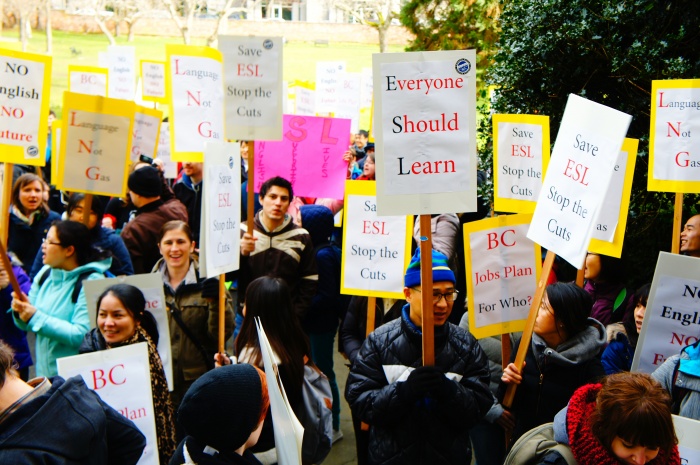If anyone thinks the recent ESL cuts are the result of budget worries, they’re sadly mistaken. The problem of English language training and how it should be delivered in British Columbia is a decade-long debate.
Taken from a sociological standpoint, a critical constructionist believes that social problems are constructed, conceived, and presented to the public to reflect the interests of society’s elite more than the mainstream at the expense of those with the least power.

Using the critical constructionist approach, I would argue that the construction of this problem is two-pronged.
For starters, it diverts public attention away from the fact that government is underfunding and “privatizing” public postsecondary by putting the responsibility of immigrant language training on to non-profit and community organizations with fewer resources to deliver on those promises. Secondly, it casts immigrants as job takers while being freeloaders on the taxpayer dollar.
As stated in the Ministry of Advanced Education’s Adult Basic Education (ABE) articulation handbook, British Columbia has had a “rich history” of delivering ABE courses and programming since the 1960s. In the public postsecondary system, it’s been delivered by 18 institutions across BC in the form of Adult Upgrading, Employment Training, Adult Special Education (ASE), and even English as a Second Language (ESL).
As a way to counteract the growing concerns of rising tuition, the provincial government instituted a tuition freeze in the 1990s and, later, a two-percent tuition cap following a couple of years of deregulated tuition fees, where institutions such as Camosun College were able to selectively raise tuition on certain programs.
Adult Basic Education to this day is defined as tuition-free. During a time of tuition caps and declining budgets, institutions looked to increasing international student enrolment. International student fees are largely unregulated and were readily seen as a way to generate revenues in a time of flat funding. Camosun College restructured its ESL into English Language Development. College preparatory ESL courses (English 10, 11, and 12) that were formerly adult upgrading became tuitioned. This gave the institution further legitimacy to raise tuition fees on international students for English language training.
From a critical constructionist perspective, society’s elite appears to have successfully branded ESL students as primarily wealthy and transient immigrants who seek to reap their hard-earned taxpayer benefits. It stigmatizes a vital portion of our emerging population as “temporary workers” and further entrenches the view that public postsecondary is a privilege for only those who can afford it.
